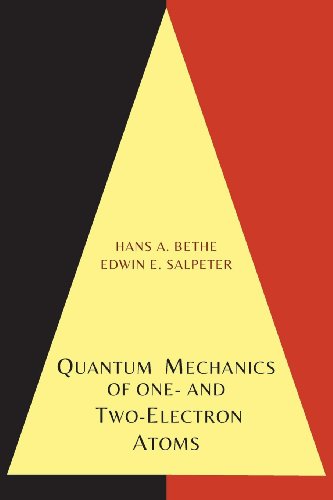

Quantum Mechanics of One-and-Two-Electron Atoms Edwin E. Salpeter, Hans A. Bethe
Publisher: Dover Publications
But why are there three generations in the first place? AM3: My explanation resembles something in classical mechanics which naively appears to contradict causality (the principle of least action, perhaps); Aaronson: Ironically, this causality paradox from classical look like wacky unrealistic physics, and that are contradicted by the most basic experiments in any quantum system that we can manipulate coherently: nuclear spins, photon polarization, electron spins, atomic orbitals, you name it. Two significant breakthroughs are enabling this forward progress, Petta said in an interview. However, temperatures below about 300 mK Attached to the membrane are a series of junctions, each comprising a 30-nm-thick layer of normal conductor and a 300-nm-thick layer of superconductor, separated by a very thin 1 nm layer of insulator. In quantum-based systems, the direction of the spin (either up or down) serves as the basic unit of information, which is analogous to the 0 or 1 bit in a classical computing system. If energy weren't quantized, the electron would gradually spiral in to the proton, and the atom would collapse. Tunnelling electrons chill large objects to below 300 mK. Reality and the Extended Mind From the author: The inspiration came from many years of personal research into a range of scientific fields including consciousness and psi research, psychology, biology, cosmology, quantum physics and philosophy of mind. Temperatures below about 300 mK are integral to many areas of modern physics research from quantum computers to dark-matter detection. At the subatomic scale, we know there are three families of fundamental particles - called "generations" - and each one contains two quarks, a neutrino and a negatively charged particle (the lightest being the electron). And the big one: why do the two pillars of 20th century physics, quantum mechanics and Albert Einstein's general theory of relativity, not agree with each other? But, as things stand, an undisturbed hydrogen atom is very unlikely (1) Under the Quantum Foam: Does space break down at a small enough scale? The first is the Quantum-based technologies exploit the physical rules that govern very small particles — such as atoms and electrons — rather than the classical physics evident in everyday life. Some think that QM supports a multiverse in which our universe is only one of an endless set of variations.